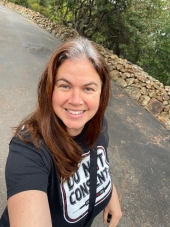I want to dedicate this thread to the idea of building a straw bale home for ..... super cheap. Less than a thousand dollars. Maybe there are straw bale homes created for less than $200.
To start things off, I received this email today which qualifies for this thread/ Part 1:
Thanks, Paul, for the inspiring videos, which remind me of my past. Too bad I don't have a video, or I'd send it to add to your collection, since you don't have a "mini-strawbale" with these! I will paint a picture in words instead:
I lived for many years in a tiny strawbale (7 by 8, maybe a bit smaller inside dimensions) hut that I built in the desert near Pearce, Arizona. It is still standing, and cost very little to build (under $500 and only that expensive because I had to buy lumber, it doesn't grow well out there). I broke all the strawbale "rules"--partly out of a desire to disprove certain notions regarding huge foundations, and partly out of necessity... as I had moved out to the desert and was living in a tent when I discovered the area had 80 mph winds. Not fun in a tent!
Happily, I had a stash of old, junky bales (loose and floppy) obtained rather cheaply from local farmer who'd kept them for years in his barn. I stacked them 3-high around the tent as an impromptu emergency windbreak in the middle of the night. In the morning, surveying my handiwork, it occurred to me that two more rows would make it big enough to transform into a shed, so that's what I did, leaving a space for a small window on S. side. A sixth row on one side created support for a simple shed roof (2 by's and plywood, tarpaper, rollroofing, and more bales on top created excellent insulation plus weight to hold roof down (necessary, it blew off once before this got done, but was so small two people were able to just flip it right back on, I also added steel cables on exterior anchored to cement in ground, no more roof levitations). The roof bales slowly decomposed and created habitat for wildlife and small plants. If I had been more ambitious I could have accelerated this by adding some compost/manure and soil. It made an effective and very cheap living roof.
The door and window and frames for these were retrofitted to openings--again not according to standard procedure but it STILL WORKED! It would have been easier if I'd started with them already made and added bales around them, yes. But like I said, this is disproving various notions of how things "must" be done. I made triangular frames in the spaces created by the shed roof slope and cut glass to fit these. Doing it again, I'd also have added vents, because body heat would get the place toasty in summer and that would have let me cool it better with the evening breezes. I also would have built a better solar air collector for the south side and integrated that into the south wall, more solar design would have helped.
A sack of cement was mixed into the surface soil, after weed removal, wetted down and smoothed out. Left to dry for a couple weeks it became an impervious flooring, no issues with moisture, bugs, rodents getting through ever in 8 years. I painted it with ordinary floor paint and added a small rug for comfort. It worked very well.
Walls were plastered with local mud, this was the most labor intensive part. I used sand from the road grading, red clay soil from tree holes, a bit of cement, waste straw, water and (important!) used motor oil. Yes, motor oil. It made the best mud plaster ever! This stuff was super strong, very plastic and much easier to work with than regular mud plaster, plus it beaded off water and never cracked, even on unstabilized (no chicken wire netting was used) strawbales. (loose and floppy, remember?) I got the idea from an adobe sculptor who used linseed oil in her mix to stabilize giant works of art, it's way more effective than asphalt emulsion that so-called experts recommend. But of course, linseed oil is costly, whereas used motor oil is FREE! And it corrected the greyish tinge from the cement, giving the end result a very pleasant, natural tan color. Many people have criticized me for utilizing this resource in this manner, but I'd don't see how the minerals from the oil in any way damaged either the plaster or me (and I happen to be extremely sensitive to chemicals). Limewash was added on the inside to brighten things up. Shelves and cubbyholes were also plastered in during the process, and a few bottle-windows.
...










